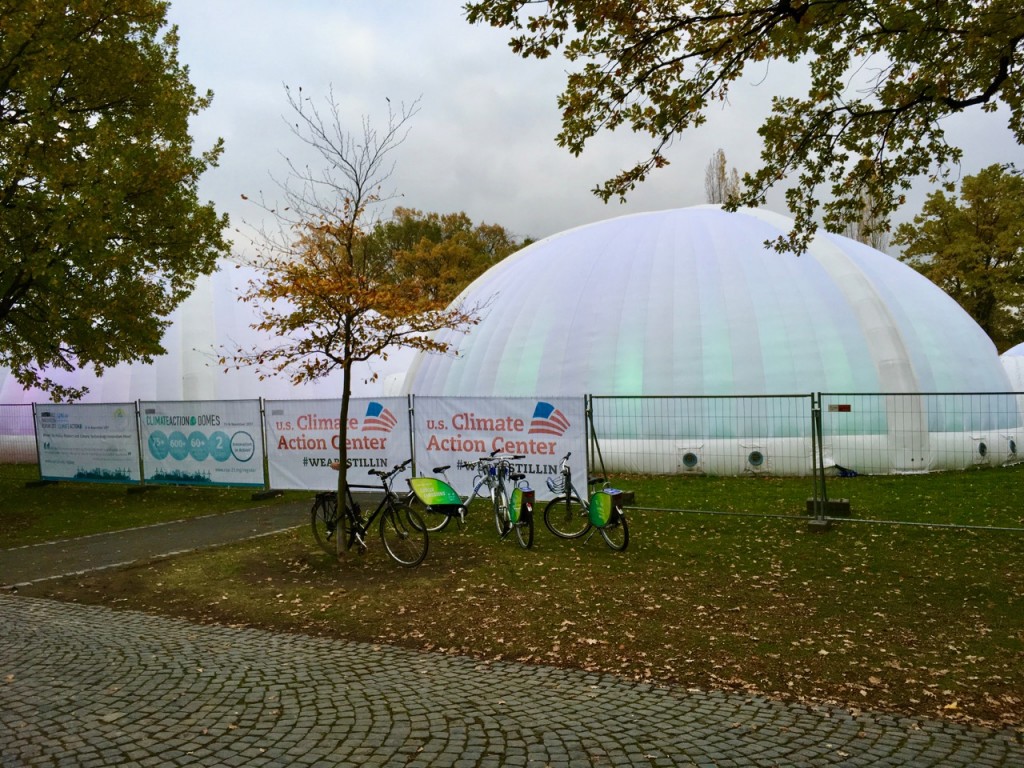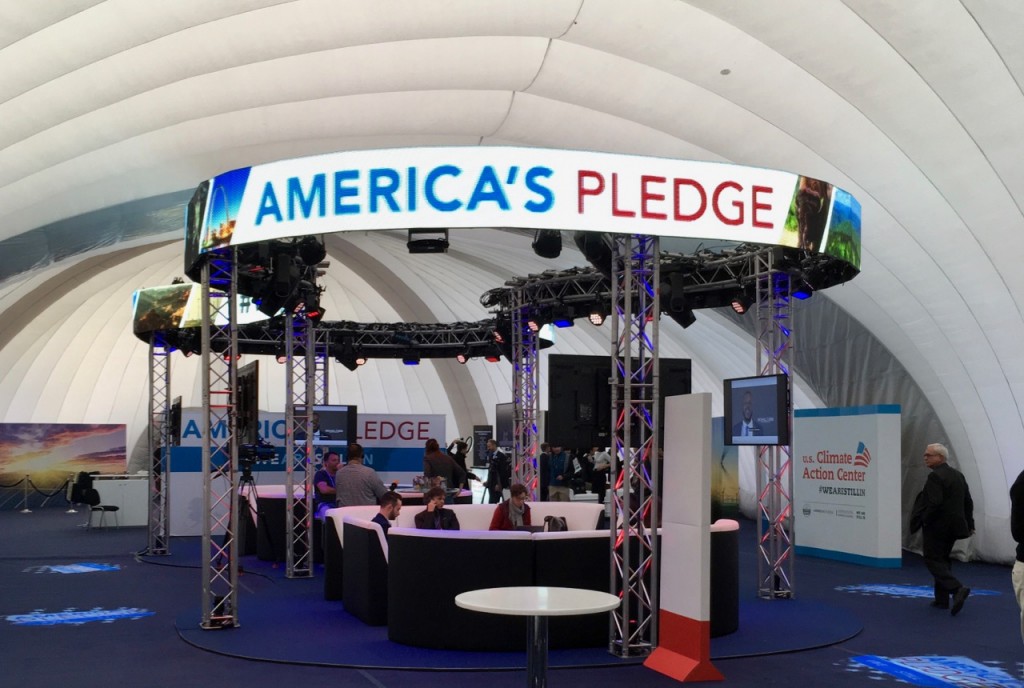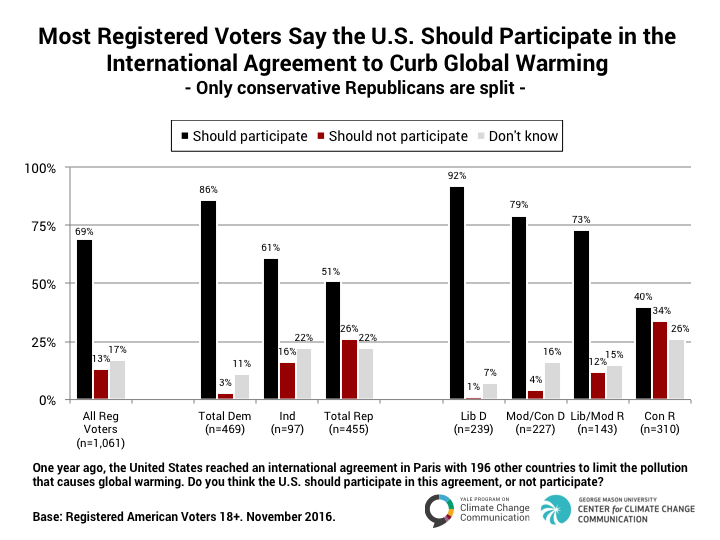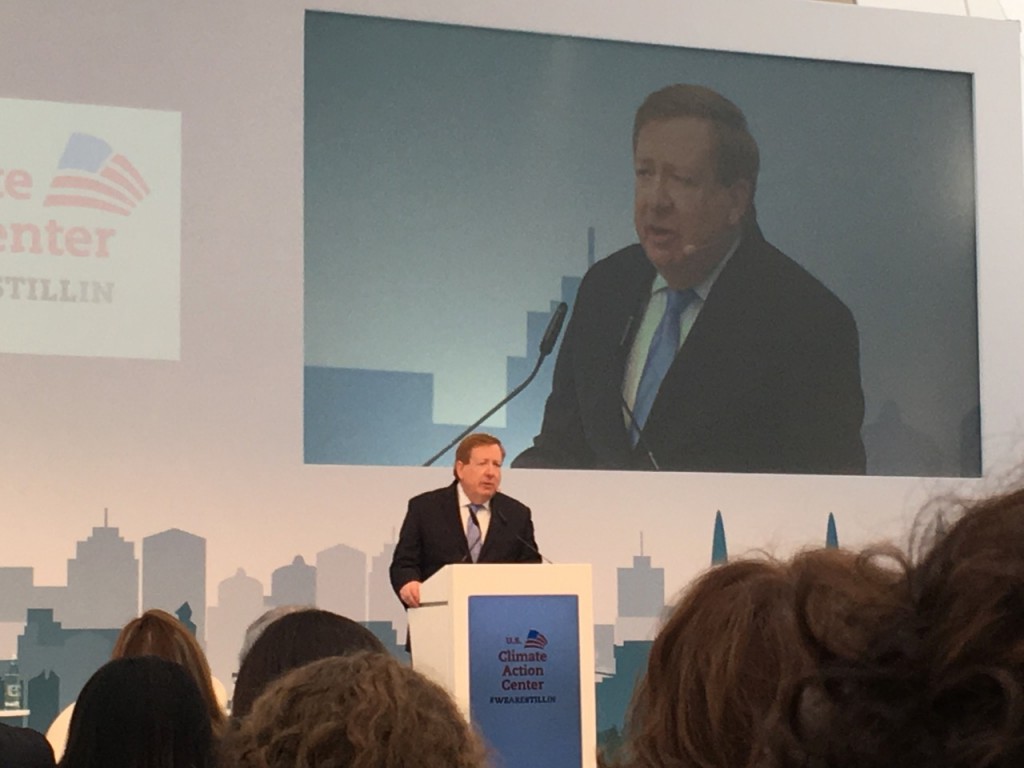Today marked the kickoff of events in the US Climate Action Center, the non-federal US pavilion hosted by We Are Still In. I attended these events as well as a session of the informal working group on item 7 of the Ad-Hoc Working Group on the Paris Agreement (APA) agenda.
The US delegation is led by US undersecretary of state for political affairs Thomas Shannon, a career diplomat and Obama-era appointee. The negotiators seem to be experienced COP participants, some with long histories with the climate negotiations. From reports from other RINGO constituents and our own observations in the meetings, the US delegation has been relatively subdued but not absent from the negotiations. US negotiators seem engaged in issues of process and substance in the informal sessions for the APA and the Warsaw International Mechanism on Loss and Damage.
The “unofficial” US delegation has been anything but subdued at this meeting, holding events in a network of inflatable domes just outside the main negotiations. The Climate Action Center is huge and very polished. (The cost of the regular pavilions is 380 euros per square meter +19% VAT).


This is the hub for the delegation of US non-federal leaders, including mayors, governors, corporate executives, clergy, and university presidents who are attending the COP. William Shatner was not able to attend in person but sent his well-wishes via video.
This an interesting group: not party to the official negotiations, but it is positioning itself as a group with the capacity to meet US mitigation and financial commitments under the agreement. People at the conference seemed a little puzzled about the division, and some members of the group itself seemed likewise unsure of their specific role at the conference.
On the first day of the conference I attended a panel hosted by the Climate Action Network, an environmental NGO with a large presence at the conference. Alden Meyer of the Union of Concerned Scientists, a Washington-based non-profit working on environmental issues, spoke about the US role at the negotiations, emphasizing that subnational groups were trying to both cut emissions and mobilize climate financing to help the US meet its commitments under the Paris Agreement. A question from the audience about who other parties should be negotiating with, Meyer emphasized that negotiations about transparency, finance, and other official matters must go through the federal delegation, but he urged participants to think of the current administration as an “aberration” rather than a long-term trend in US climate policy. He highlighted the role of the US subnational-delegation as being closer to public opinion than the executive branch of the government. This point came up in the afternoon today when Mayors and State Representatives in the non-state delegation talked about responding to the demands of their constituents.

The event started with remarks by James Brainard, the Republican Mayor of Carmel Indiana. He made the case that there is more support for climate action in the Republican party than is reflected in the executive branch of the government and talked about the nonpartisan history of environmental protection in the United States. (He later talked about the capacity for state and local-level change as a benefit of not ceding too much control to the federal government.)

Mayor Brainard was then joined by a group that spoke about achieving climate goals from the perspective of faith groups, corporations, universities, cities and states. A member of the audience asked the panelist how they hoped to engage with the other countries at the conference, and their responses were understandably vague, since there’s no official channel for them to do so.
The second event focused on market mechanisms to achieve climate progress. Speakers from business and industry talked about offsets, carbon pricing, and investing in renewables. California Assemblymember Cristina Garcia spoke about using cap and trade revenues and real-time local environmental monitoring as a tool to achieve environmental justice in disadvantaged communities.
The main priority of the non-federal US group at this point is to make visible US sub-national support for the Paris Agreement. The US Climate Action Center events today focused on broad strokes of different approaches to achieving the Paris Agreement goals, and events later in the week are supposed to go into more specifics. Perhaps future COPs will have a larger role for the US sub-nationals.
The events I am most looking forward to this coming week are the We Are Still In organized events, especially the Governor’s Panel. I have a feeling I will be spending a lot of time at this pavilion.
Yes, it looks like a great slate of events! I’d like to get more details about what sort of international role they’re planning to play and to get an answer to Eric’s finance question.
Really interesting Jennifer, thanks! Looking forward to hearing more about this issue from others as we get into week 2. As an aside, it seems like the Yale program on Climate Change Communication is turning into a star – arguably deservedly so – for their role in highlighting the nuances of U.S. public opinion on climate issues.